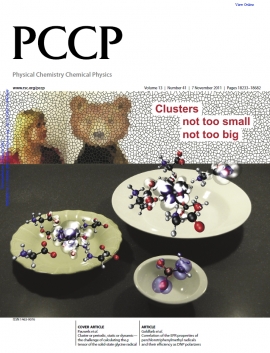Investigating the Halochromic Properties of Azo Dyes in an Aqueous Environment by Using a Combined Experimental and Theoretical Approach
Abstract
The halochromism in solution of a prototypical example of an azo dye, ethyl orange, was investigated by using a combined theoretical and experimental approach. Experimental UV/Vis and Raman spectroscopy pointed towards a structural change of the azo dye with changing pH value (in the range pH 5–3). The pH-sensitive behavior was modeled through a series of ab initio computations on the neutral and various singly and doubly protonated structures. For this purpose, contemporary DFT functionals (B3LYP, CAM-B3LYP, and M06) were used in combination with implicit modeling of the water solvent environment. Static calculations were successful in assigning the most-probable protonation site. However, to fully understand the origin of the main absorption peaks, a molecular dynamics simulation study in a water molecular environment was used in combination with time-dependent DFT (TD-DFT) calculations to deduce average UV/Vis spectra that take into account the flexibility of the dye and the explicit interactions with the surrounding water molecules. This procedure allowed us to achieve a remarkable agreement between the theoretical and experimental UV/Vis spectrum and enabled us to fully unravel the pH-sensitive behavior of ethyl orange in aqueous environment.



_0.gif?itok=kp2w0kDX)
 Open Access version available at
Open Access version available at